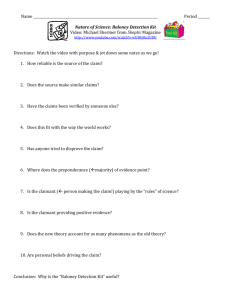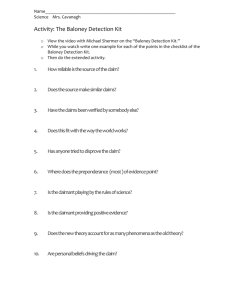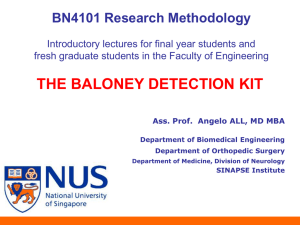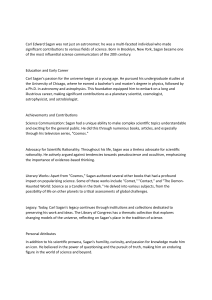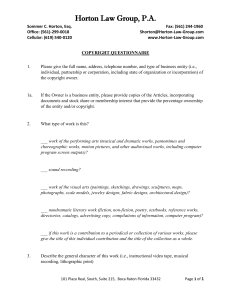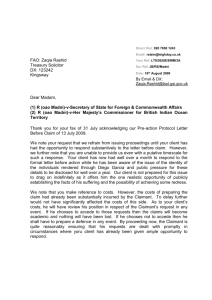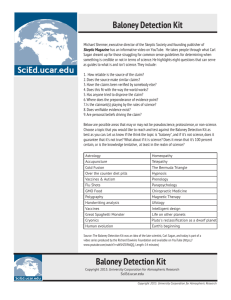Sagan's Baloney Detection Kit
advertisement
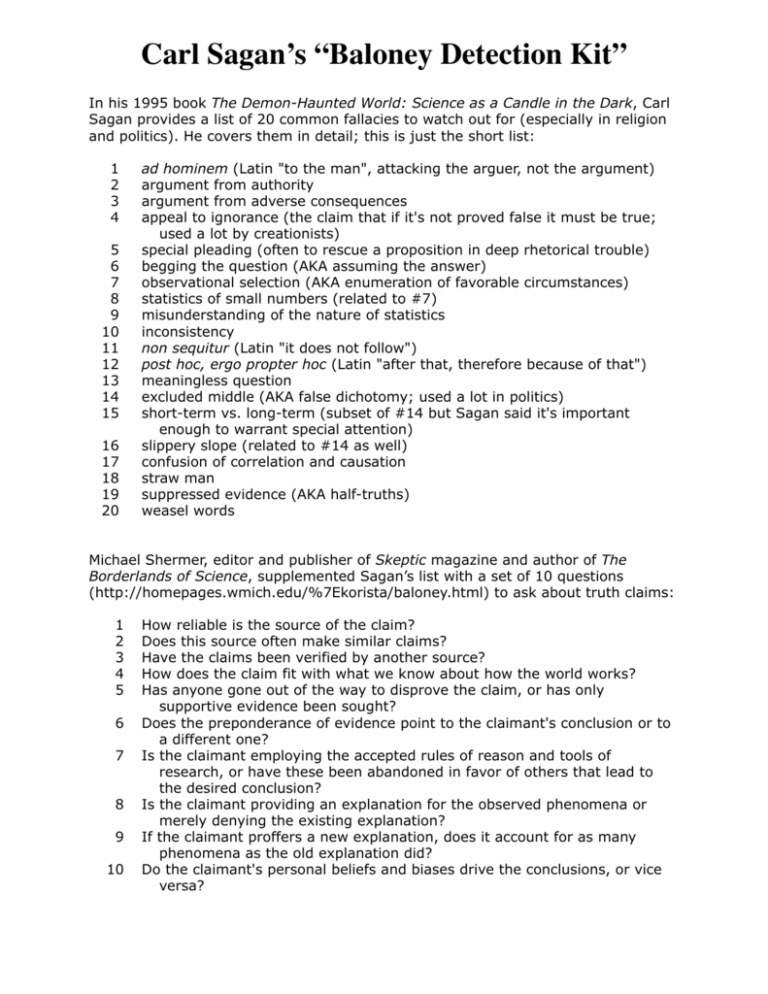
Carl Sagan’s “Baloney Detection Kit” In his 1995 book The Demon-Haunted World: Science as a Candle in the Dark, Carl Sagan provides a list of 20 common fallacies to watch out for (especially in religion and politics). He covers them in detail; this is just the short list: 1 2 3 4 5 6 7 8 9 10 11 12 13 14 15 16 17 18 19 20 ad hominem (Latin "to the man", attacking the arguer, not the argument) argument from authority argument from adverse consequences appeal to ignorance (the claim that if it's not proved false it must be true; used a lot by creationists) special pleading (often to rescue a proposition in deep rhetorical trouble) begging the question (AKA assuming the answer) observational selection (AKA enumeration of favorable circumstances) statistics of small numbers (related to #7) misunderstanding of the nature of statistics inconsistency non sequitur (Latin "it does not follow") post hoc, ergo propter hoc (Latin "after that, therefore because of that") meaningless question excluded middle (AKA false dichotomy; used a lot in politics) short-term vs. long-term (subset of #14 but Sagan said it's important enough to warrant special attention) slippery slope (related to #14 as well) confusion of correlation and causation straw man suppressed evidence (AKA half-truths) weasel words Michael Shermer, editor and publisher of Skeptic magazine and author of The Borderlands of Science, supplemented Sagan’s list with a set of 10 questions (http://homepages.wmich.edu/%7Ekorista/baloney.html) to ask about truth claims: 1 2 3 4 5 6 7 8 9 10 How reliable is the source of the claim? Does this source often make similar claims? Have the claims been verified by another source? How does the claim fit with what we know about how the world works? Has anyone gone out of the way to disprove the claim, or has only supportive evidence been sought? Does the preponderance of evidence point to the claimant's conclusion or to a different one? Is the claimant employing the accepted rules of reason and tools of research, or have these been abandoned in favor of others that lead to the desired conclusion? Is the claimant providing an explanation for the observed phenomena or merely denying the existing explanation? If the claimant proffers a new explanation, does it account for as many phenomena as the old explanation did? Do the claimant's personal beliefs and biases drive the conclusions, or vice versa?
